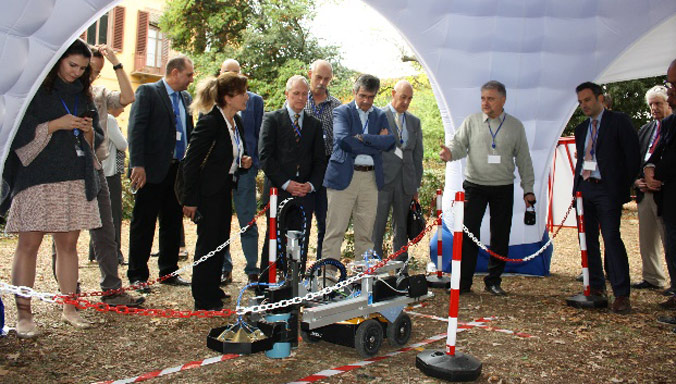
The North Atlantic Treaty Organization (NATO) recently announced the development of three new technologies designed to detect improvised explosive devices (IEDs) as part of its Science for Peace and Security (SPS) Program.
The three technologies — a semi-autonomous robot for detection of mines and IEDs, a lightweight and easy-to-use mine detector, and a handheld detector for dirty bombs — were successfully tested in Florence, Italy, in October. These technologies will be particularly helpful to counter threats in vulnerable places like train stations, subways, and airports.
“Without adequate regional and international cooperation, it would be impossible to address the variety of issues relating to threats from explosives today,” Robert Weaver, NATO Deputy Assistant Secretary General for Emerging Security Challenges, said.
The workshop was organized with the University of Florence where the devices were tested.
The semi-autonomous robot for detection of mines and IEDs — developed by scientists from Italy, the United States, and Ukraine – is named U-GO First. It uses impulse radar and 3D data for real-time detection of explosions and is designed to prevent casualties in search of explosives.
The easy-to-use handheld ultra-wideband (UWB) mine detector — developed by a group from Norway and Ukraine – can be produced inexpensively through 3D printing.
The third is a handheld detector for dirty bombs to be used mainly in port and border security. It was developed by a team from Australia, Croatia, Japan, Portugal, and Slovenia.
“Participants diffused the results of their work, compared the developed methods and found possible synergies to increase the technological readiness level of the sensors, the electronics systems and the detection methods of these projects,” Lorenzo Capineri, co-director of the Holographic and Impulse Subsurface Radar for Landmine and IED Detection project and professor at the University of Florence, said.
More than 50 scientists and experts from 16 NATO countries attended the workshop.
“This event was a great opportunity to assess how SPS projects in the field of explosives detection contribute to the development and refinement of scientific and technical knowledge,” Eyup Turmus, scientific advisor of NATO’s SPS Program and chairman of the workshop, said. “In particular, the field test session with prototypes showed the concrete outcomes of years of research in this scientific area and will help us determine future actions and direction of the SPS Program.”




